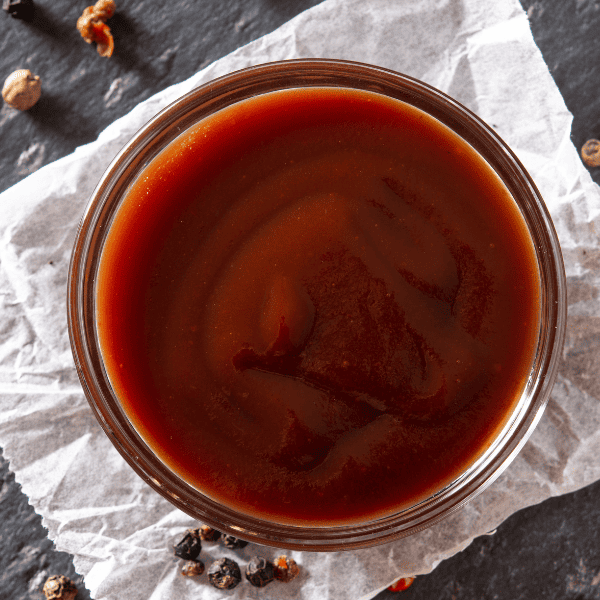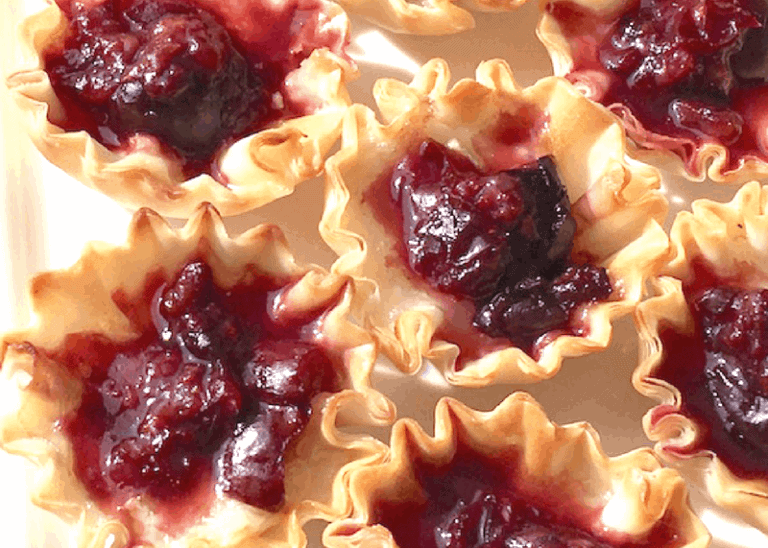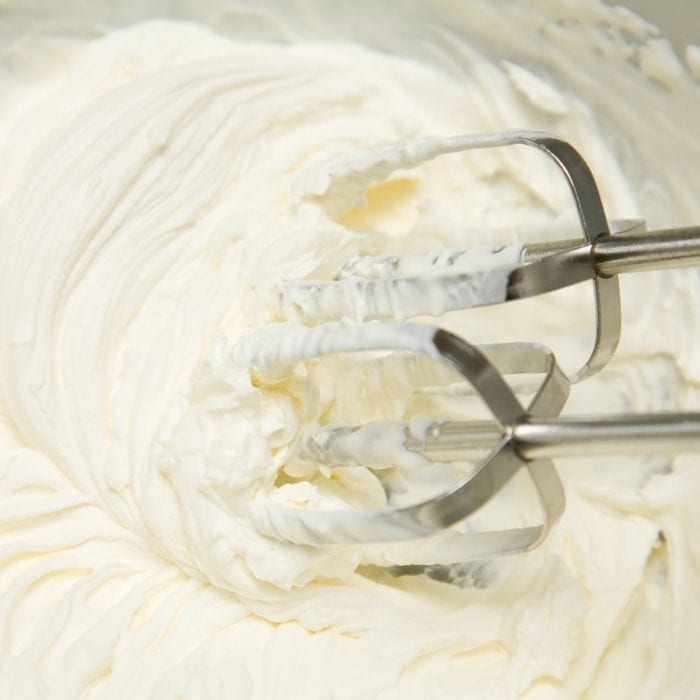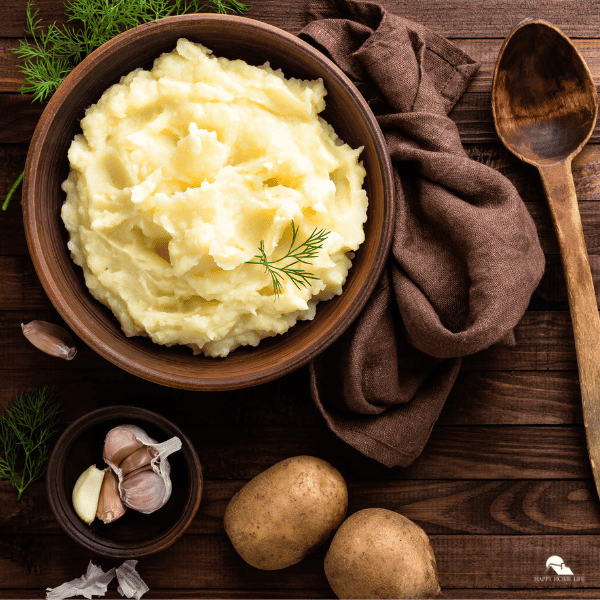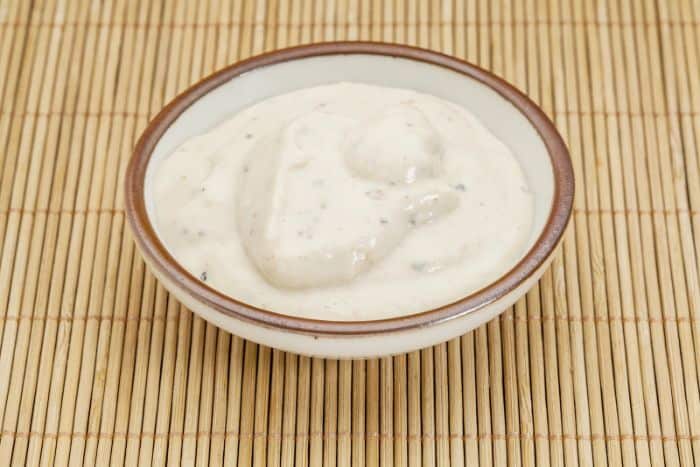Cooked salmon is one of our favorite dishes. There’s nothing better than a plate of orange honey glazed salmon or a couple of salmon patties along with some delicious sides. But, if you’ve left your food out of the fridge for a while, it’s important to know how long it can be out before it becomes unsafe. As you may know, leaving cooked salmon out at room temperature for too long can lead to the growth of harmful bacteria, which can cause food poisoning.

How long can cooked salmon sit out? According to the United States Department of Agriculture, cooked salmon should not be left out at room temperature for more than two hours. This is because bacteria can grow rapidly in temperatures between 40°F and 140°F. If cooked salmon is left out at room temperature for longer than two hours, it should be discarded to avoid the risk of foodborne illness.
To ensure the safety of cooked salmon, it is best to store it in the refrigerator or freezer as soon as possible after it has been cooked. If you are serving cooked salmon at a party or gathering, it is important to keep it refrigerated or on ice to prevent it from reaching unsafe temperatures. By following these guidelines, you can enjoy delicious and safe cooked salmon.
The Importance of Temperature
Temperature plays a crucial role in determining how long cooked salmon can sit out. Bacteria can thrive in temperatures between 40°F and 140°F, which is known as the “temperature danger zone.” When salmon is left out at room temperature, it can quickly become unsafe to eat. This guideline applies to all perishable foods, not just salmon.
To keep cooked salmon safe for longer, it should be stored in the refrigerator or freezer. When storing in the refrigerator, it should be placed in an airtight container and consumed within 3-4 days. If you want to store cooked salmon longer, it can be frozen for up to 3 months. Raw salmon can be stored in the freezer for 3-8 months.
Signs of Spoiled Salmon
According to LiveStrong, cooked salmon that has been stored in the refrigerator can be safely eaten for up to 3 or 4 days. However, if you notice a foul, sour odor during or after this time, it’s likely gone bad and should be thrown out. Cooked salmon that is spoiled may have a rancid, sour, fishy, or ammonia-like smell and shouldn’t be eaten, per the FDA.
Smell
One of the most obvious signs that cooked salmon has spoiled is a strong, unpleasant odor. If the salmon smells sour, pungent, or like ammonia, it’s likely gone bad and should not be consumed. According to the U.S. Food and Drug Administration (FDA), salmon that has only a mild smell when removed from the package is safe to eat.
Discoloration
Another sign of spoiled salmon is a change in color. Fresh salmon should be pink or orange in color, but if it has turned gray or brown, it’s likely gone bad. Additionally, if you notice any mold or white spots on the salmon, it should not be consumed.
Texture
The texture of cooked salmon can also indicate whether it has gone bad. If the salmon feels slimy or sticky to the touch, it’s likely spoiled. Fresh salmon should have a firm, smooth texture.
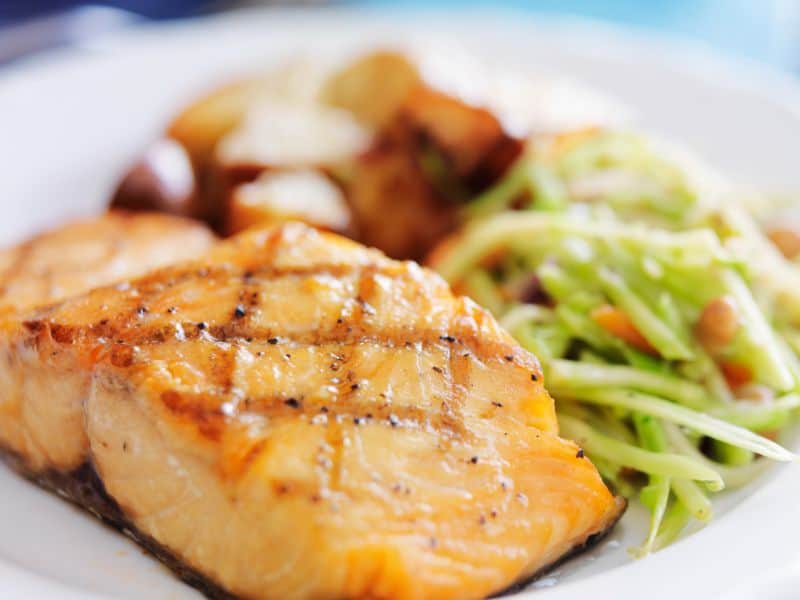
Storing Cooked Salmon
Cooked salmon is a delicious and healthy meal that can be enjoyed in many different ways. However, it is important to store it properly to ensure its safety and freshness. Here are some tips for storing cooked salmon:
Storage
Cooked salmon should be stored in an airtight container to prevent it from being exposed to air. This will help to keep it fresh for longer and prevent it from drying out. It is also important to store it in the refrigerator as soon as possible after it has been cooked.
Refrigerating Cooked Salmon
Cooked salmon should be refrigerated at a temperature of 40°F or below.
Freezing Cooked Salmon
If you are storing salmon for longer than a few days, it is best to freeze it. This will help to preserve its freshness and flavor. Cooked salmon can be frozen for up to 3 months. When freezing cooked salmon, be sure to wrap it tightly in plastic wrap or aluminum foil to prevent freezer burn.
Reheating and Defrosting Salmon
When it comes to reheating cooked salmon, it’s important to do so safely to avoid the risk of food poisoning. The safest way to reheat salmon is by using an oven or stovetop. Simply place the salmon in a baking dish and cover it with foil. Preheat the oven to 350°F and bake for 10-15 minutes or until the salmon is heated through.
If you’re in a hurry, you can also use a microwave to reheat salmon. Place the salmon on a microwave-safe plate and cover it with a damp paper towel. Microwave on high for 30-second intervals until the salmon is heated through. Be sure to check the internal temperature of the salmon with a food thermometer to ensure it has reached 165°F if reheating in the microwaving or 145°F if reheating in the oven or in a skillet.
When it comes to defrosting salmon, there are three safe ways to do so: in the refrigerator, in cold water, or in the microwave. The refrigerator method is the safest and most recommended method. Simply place the salmon in a covered container and allow it to thaw in the refrigerator overnight.
If you need to defrost salmon quickly, you can use the cold water method. Place the salmon in a sealed plastic bag and submerge it in cold water. Change the water every 30 minutes until the salmon is thawed. This method can take anywhere from 30 minutes to an hour depending on the size of the salmon.
Finally, if you’re in a hurry, you can use the microwave to defrost salmon. Place the salmon on a microwave-safe plate and defrost on the defrost setting or at 50% power for a few minutes at a time until the salmon is thawed. Be sure to cook the salmon immediately after defrosting in the microwave to avoid the risk of bacterial growth.
To summarize, to ensure the safety of cooked salmon, the USDA recommends the following guidelines:
- Cook salmon to an internal temperature of 145°F.
- Store cooked salmon in the refrigerator within two hours of cooking.
- Use cooked salmon within 3 to 4 days.
- Do not leave cooked salmon at room temperature for more than two hours.
Following these guidelines will help prevent the growth of harmful bacteria and ensure that cooked salmon is safe to eat.

Frequently Asked Questions
Can you eat cooked salmon that has been left out overnight?
No, it is not safe to eat cooked salmon that has been left out overnight. According to the United States Department of Agriculture, cooked salmon can only sit out for two hours at room temperature before it becomes unsafe to eat. Bacteria grow exceptionally rapidly at room temperature, quickly making the food dangerous to eat. Eating salmon that has been left out overnight can cause food poisoning.
Can I eat salmon left out for 4 hours?
No, it is not safe to eat salmon that has been left out for 4 hours. As mentioned earlier, cooked salmon can only sit out for two hours at room temperature before it becomes unsafe to eat. Consuming salmon that has been left out for 4 hours or more can lead to food poisoning and other health problems.
How long should salmon sit after cooking?
After cooking, salmon should sit for a few minutes before being served. This allows the juices to redistribute throughout the fish, making it more flavorful and moist. The exact amount of time that salmon should sit depends on the thickness of the fillet or steak. As a general rule, salmon should sit for 3-5 minutes after cooking before being served.
How do you know if cooked salmon has gone bad?
If cooked salmon has gone bad, it will have a sour smell and a slimy texture. It may also have a grayish color and give off a fishy odor. If you are unsure whether cooked salmon has gone bad, it is best to err on the side of caution and throw it away.
How long can cooked salmon sit in the fridge?
Cooked salmon can be stored in the refrigerator for up to 4 days. To maximize its shelf life, store it in an airtight container or wrap it tightly in plastic wrap. If you are unsure whether cooked salmon is still safe to eat, it is best to throw it away.
How long can frozen salmon sit out?
Frozen salmon should not be left out at room temperature. To thaw frozen salmon, it is best to do so in the refrigerator overnight or by placing it in a sealed plastic bag and submerging it in cold water, changing out the water every 30 minutes until thawed.

